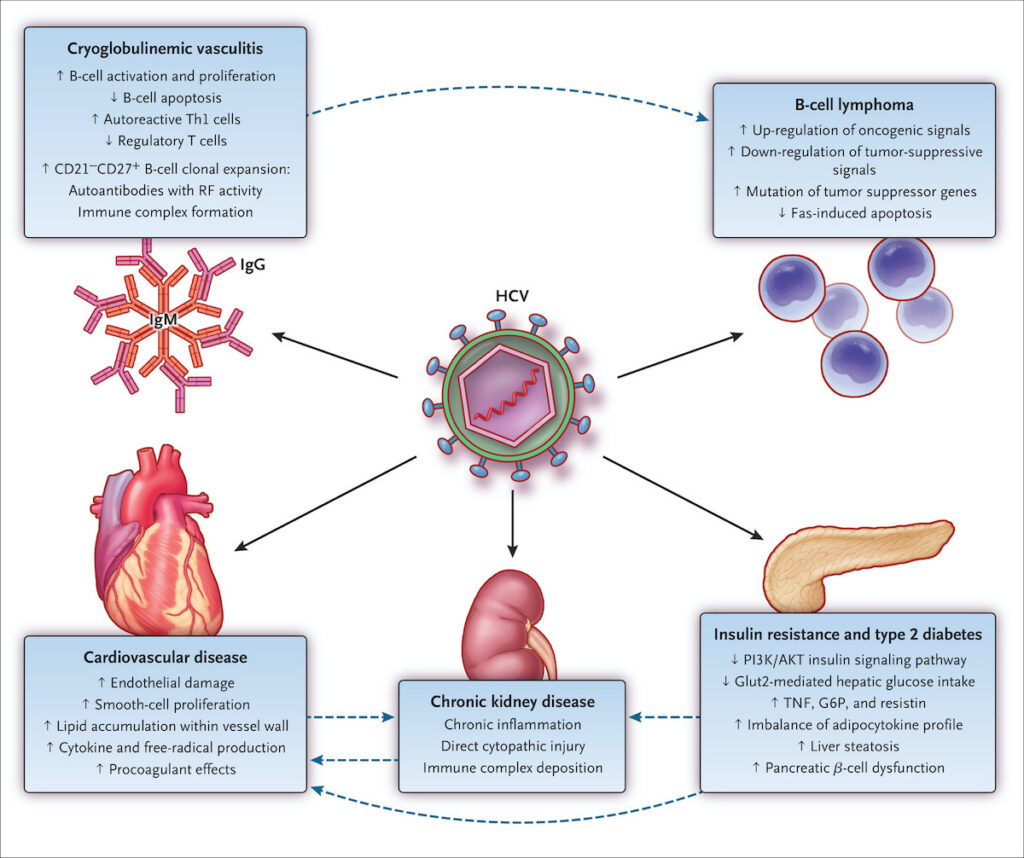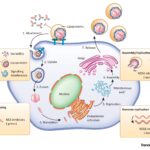Chronic hepatitis C (HCV) is a liver infection caused by the hepatitis C virus, which can lead to serious complications such as liver cirrhosis and liver cancer. Among the various strains of the virus, genotype 5 is one of the less common variants, predominantly found in regions like South Africa. Understanding the specifics of this genotype is crucial for the accurate diagnosis, treatment, and management of the disease. In this article, we delve into the details of chronic hepatitis C – genotype 5, exploring its characteristics, symptoms, diagnosis, treatment options, and long-term care strategies.

What is Chronic Hepatitis C?
Chronic hepatitis C refers to the long-term infection of the liver by the hepatitis C virus. If left untreated, this infection can persist for decades and cause substantial damage to the liver, potentially leading to cirrhosis, liver failure, and liver cancer. The hepatitis C virus is primarily transmitted through blood-to-blood contact, commonly through sharing needles or receiving contaminated blood products. In some cases, the virus may be passed from an infected mother to her child during childbirth.
Unlike other liver diseases, hepatitis C often remains asymptomatic for years, making early detection challenging. This highlights the importance of regular screening for individuals at higher risk of the infection.
Genotype 5 of Hepatitis C
Hepatitis C virus (HCV) is categorized into six main genotypes, with each genotype further subdivided into several subtypes. Genotype 5, although not as prevalent as genotypes 1 or 3, is predominantly found in South Africa and some regions of Europe. Genotype 5 infections are characterized by specific genetic differences that affect how the virus interacts with the host liver and responds to antiviral treatments.
Prevalence of Genotype 5
Genotype 5 is most commonly found in regions where people of African descent are predominant. In South Africa, for example, genotype 5 accounts for a significant proportion of the chronic hepatitis C cases. It is important to note that genotypes 1, 2, and 3 are more common in the United States and other Western countries. Despite this, genotype 5 still represents a significant health challenge in specific regions due to its unique characteristics.
Symptoms of Chronic Hepatitis C – Genotype 5
The symptoms of chronic hepatitis C are often mild or entirely absent, especially during the early stages of infection. This is true for all genotypes, including genotype 5. However, as the disease progresses and liver damage accumulates, more noticeable symptoms may appear. These can include:
- Fatigue: Persistent tiredness or lack of energy, which is one of the most common symptoms.
- Jaundice: Yellowing of the skin or eyes due to liver dysfunction.
- Abdominal Pain: Discomfort in the upper right abdomen, often related to liver enlargement.
- Nausea and Vomiting: Resulting from liver damage or complications.
- Dark Urine: Due to the buildup of bilirubin in the bloodstream.
- Loss of Appetite: Decreased interest in eating, sometimes accompanied by unexplained weight loss.
As with all forms of hepatitis C, the disease may remain asymptomatic for years, with liver damage accumulating over time before any noticeable symptoms occur.
Diagnosis of Chronic Hepatitis C – Genotype 5
Diagnosing chronic hepatitis C involves a combination of blood tests and sometimes liver imaging. The key diagnostic steps include:
1. HCV Antibody Test
This initial screening test detects the presence of antibodies against HCV. A positive result indicates exposure to the virus, but it does not confirm an active infection. A follow-up test is required for further confirmation.
2. HCV RNA Test
If the antibody test is positive, an HCV RNA test will measure the amount of virus in the blood, confirming active infection. This test is also used to determine the viral load, which can help assess the severity of the infection.
3. HCV Genotype Testing
Once the infection is confirmed, genotype testing identifies the specific strain of the virus, including genotype 5. This test is critical for selecting the most appropriate antiviral treatment, as some genotypes are more resistant to certain medications than others.
4. Liver Biopsy or Imaging
In cases of advanced liver disease, a liver biopsy or imaging tests such as elastography may be recommended to assess the degree of liver damage or fibrosis. This helps determine the need for treatment and monitor disease progression.
Treatment Options for Genotype 5 Hepatitis C
Advancements in hepatitis C treatment have revolutionized patient care, particularly with the introduction of direct-acting antivirals (DAAs). These medications target the hepatitis C virus directly, inhibiting its replication and significantly improving cure rates. The treatment regimen for genotype 5 is similar to that for other genotypes, with a few adjustments based on viral resistance and patient health factors.
Direct-Acting Antivirals (DAAs)
DAAs, such as sofosbuvir, ledipasvir, and velpatasvir, have demonstrated excellent efficacy in treating genotype 5 infections. These drugs work by targeting specific steps in the viral lifecycle, preventing the virus from replicating and spreading.
- Sofosbuvir + Ledipasvir: A combination treatment commonly used for various genotypes, including genotype 5.
- Glecaprevir + Pibrentasvir: Another highly effective regimen that covers a wide range of genotypes, offering patients a shorter duration of therapy.
The treatment duration typically ranges from 8 to 12 weeks, depending on the patient’s viral load and liver condition.
Interferon-based Treatments
Before the advent of DAAs, pegylated interferon was used as a primary treatment for hepatitis C. However, interferon treatments are now largely outdated due to their significant side effects and lower efficacy compared to DAAs. Interferon may still be used in certain cases when other options are not available, but it is rarely the first line of treatment for genotype 5.
Long-Term Management and Monitoring
Once hepatitis C is diagnosed and treatment has commenced, long-term management is crucial for ensuring that the virus does not return. After successful treatment, patients will undergo regular follow-up appointments to monitor liver health, viral load, and any signs of recurrence.
Patients should also maintain a healthy lifestyle to support liver function, including:
- Avoiding alcohol: Alcohol can exacerbate liver damage and complicate treatment.
- Healthy diet: A balanced diet rich in vitamins and minerals supports overall liver health.
- Vaccination: Vaccines for hepatitis A and B may be recommended, as co-infection with these viruses can worsen liver disease.
Prognosis and Outlook for Genotype 5 Patients
With the availability of effective antiviral treatments, the prognosis for patients with chronic hepatitis C – genotype 5 is significantly improved. The majority of patients who undergo appropriate treatment with DAAs can expect a cure, defined as undetectable HCV RNA in the blood 12 weeks after treatment completion.
However, it is important for patients to continue regular monitoring, as there is always a risk of reinfection, particularly if exposure to contaminated blood or other risk factors persists.
MYHEALTHMAG

